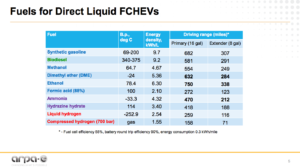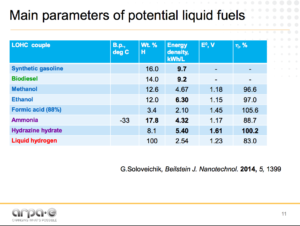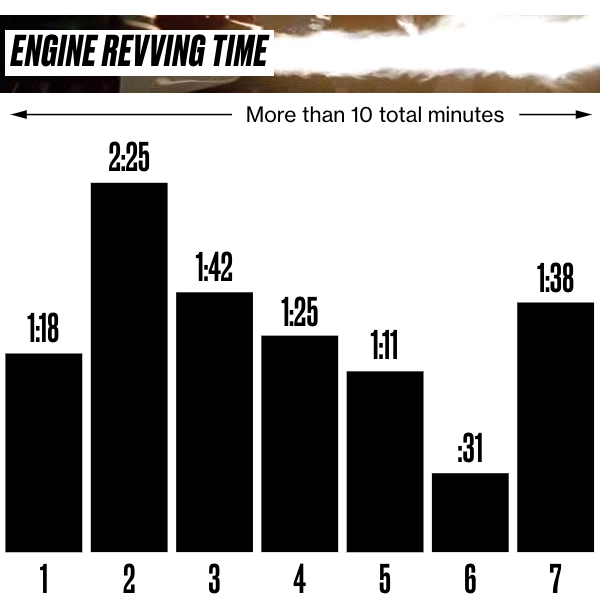The new generation of fuel cells: fast, furious, and flexible
By Trevor Brown on April 12, 2017
At ARPA-E’s recent Energy Innovation Summit in Washington, DC, Program Director Grigorii Soloveichik presented his vision for the future of transportation: hybrid electric vehicles that combine the advantages of both plug-in battery and fuel cell technologies.
This “optimal solution,” as Soloveichik described in his Fast Pitch Presentation, will require a new generation of fuel cell that is “fast, furious, and flexible.” Fast, in terms of start-up / shut-down time. Furious, in terms of energy density. And flexible, in terms of fuel choice – specifically sustainable liquid fuels, like ammonia.
Soloveichik contends that the battery electric vehicle is “overdesigned for energy,” whereas the fuel cell vehicle is “overdesigned for power.” He illustrates with commercial examples: an 85 kWh battery electric vehicle and a 113 kW fuel cell vehicle, each respectively “overdesigned” for energy or power.
By reducing the size of battery and fuel cell stack and combining them in one hybrid vehicle, you get the best of both technologies. His optimal solution would shrink these systems down to, for example, a 10-20 kWh battery with a 5-20 kW fuel cell depending on the application.
This reduction in scale would significantly reduce the cost of each system.
By using a hydrogen-rich liquid fuel, instead of cryogenic or compressed hydrogen, Soloveichik’s proposed hybrid would also capture the major benefits of the incumbent technology: the long driving range, short refueling time, and liquid commodity infrastructure of petroleum fuels. “We don’t need to build a new infrastructure like we have to do for hydrogen, because liquid fuel infrastructure already exists.”

Soloveichik illustrates the driving ranges that could be achieved by using various sustainable fuels.
“If you’re looking at ammonia, which is probably one of my favorites, there are no CO2 emissions whatsoever, unless we emit it during the production – which I also try to avoid in my REFUEL program.”
That REFUEL program, which Soloveichik directs for the US Department of Energy, is funding the development of sustainable ammonia production technologies, among other carbon-neutral liquid fuel technologies.

When Soloveichik introduced the REFUEL program during his keynote speech at the NH3 Fuel Conference, in September 2016, he used a similar table to demonstrate the comparative energy density of a range of fuels.
These tables illustrate the fundamental difference between ammonia and hydrogen as a fuel, and plainly state a strong argument in ammonia’s favor: there’s more hydrogen in ammonia than there is in hydrogen, volumetrically.
In terms of energy density, liquid ammonia contains 4.32 kWh per liter, which is 70% more than liquid hydrogen (2.54 kWh per liter at cryogenic temperature) or almost three times more than compressed hydrogen (1.55 kWh per liter at 700 bar).
In terms of driving range, a 16-gallon fuel tank of ammonia provides a driving range of 470 miles, almost twice the range of the same volume of liquid hydrogen (259 miles) and three times the range of the same volume of compressed hydrogen (158 miles).
Finally, Soloveichik makes the crucial point that, beyond all the economic and environmental benefits, driving electric is fun. He refers to Tesla’s Model S, which can accelerate from 0 to 60 mph in 3.2 seconds in “insane mode,” or in 2.8 seconds in “ludicrous mode.”

Of course, the title of his presentation pays homage to Hollywood’s $4 billion franchise of racing movies, the seventh installment of which opens in the US tomorrow. In Soloveichik’s envisioned future, however, there will be no more engine revving in racing movies, this being unnecessary with an electric car, if not impossible. (This loss will be manageable, according to Bloomberg’s analysis of the amount of screen time given to each racing activity across the franchise: using electric vehicles would have shortened the seventh film by only 1:38 minutes of dedicated engine revving.)
Many presentations from the ARPA-E Energy Innovation Summit are available online – including Soloveichik’s Fast Pitch, which you can download as a PDF or view as a video at YouTube or embedded below. The Summit also included an excellent keynote speech by Thomas Hager, detailing the history of the invention of the Haber-Bosch process.